Sol: 0
Summary Title: Successful Entry, Descent, and Landing on MDRS
Author’s name: Kshitij Mall
Mission Status: Awaiting good weather to start the EVAs for training
Sol Activity Summary: Crew 272 safely arrived at MDRS by1200 and got situated. The crew completed training about the habitat including safety measures and precautions to be taken. The crew also undertook power saving measures as the weather was non-nominal for good solar power.
Look Ahead Plan: Based on weather and upon approval, embark on 2 EVAs to get the crew members trained on using suits, radio comms, and rovers.
Anomalies in work: None
Weather: Unseasonably warm with on and off rain from 1230
Crew Physical Status: Good
EVA: None
Reports to be filed: Sol Summary, Operations, HSO, Mission Plan, Crew Bios, Crew Pictures, and Crew Mission Patch.
Support Requested: None
Operations Report – January 1st
SOL: 0
Name of person filing report: Mason Kuhn
Non-nominal systems: Hab toilet releases a bad smell after flushing.
Notes on non-nominal systems: Resolved by using a bit of the air freshener, keeping the lid closed, and the toilet room door closed.
ROVERS
Spirit rover used: No
Hours: N/A
Beginning charge: N/A
Ending charge: N/A
Currently charging: Unsure
Opportunity rover used: No
Hours: N/A
Beginning charge: N/A
Ending charge: N/A
Currently charging: Unsure
Curiosity rover used: No
Hours: N/A
Beginning charge: N/A
Ending charge: N/A
Currently charging: Unsure
Perseverance rover used: No
Hours: N/A
Beginning charge: N/A
Ending charge: N/A
Currently charging: Unsure
General notes on rovers: Unable to go check the rovers due to instructions on avoiding the mud. Advised not to plug in rovers after short EVAs unless very sunny.
Summary of Hab operations: We began familiarizing ourselves with each facet of the Hab. Unable to check static tank due to the mud outside.
WATER USE: unsure
Water (static tank): not able to be checked
Static tank pipe heater (on or off): on
Static tank heater (On or off): on
Toilet tank emptied: No
Summary of internet: Nominal
Summary of suits and radios: Suits not used, radios nominal
Summary of GreenHab operations: N/A
WATER USE: N/A
Heater: On
Supplemental light: Unsure
Harvest: N/A
Summary of ScienceDome operations: Not used
Dual split: Unsure
Summary of RAM operations: Not used
Summary of any observatory issues: Not used
Summary of health and safety issues: see HSO report
Summary of CrewCar use:
Mileage: 210,026
Damage to the vehicle: none
Oil: We checked under the hood and the level on the oil was good. Did not take a numerical reading of the oil, but this will be completed tomorrow.
Questions, concerns and requests to Mission Support:
On 2-1-2023, I request a demonstration on how to properly empty the toilet
Request hand soap for the lower deck.
No water to the utility sink on the lower deck, request demonstration for main water valves on lower deck ( I am unfamiliar with the nomenclature of the sinks )
Members Biographies – January 1st
Kshitij Mall: Commander (India)
Kshitij Mall is a Post-doctoral Research Associate at the Center for Integrated Systems in Aerospace, Purdue University. He obtained his Ph.D. and Masters degrees from the School of Aeronautics & Astronautics, Purdue University. He was a Post-doctoral Research Fellow in the department of Aerospace Engineering at Auburn University in 2019. Previously, he completed B. Tech. in Mechanical Engineering at JSSATE Noida, India and then worked for a year at Infosys Technologies Ltd. as a Computer Systems Engineer Trainee. His research interests lie in the areas of Optimal Control Theory, Atmospheric Flight Mechanics, Explainable Artificial Intelligence, and Human-Class Mars missions. He is a member of AIAA. His crew call sign is Chai.
Arly Black: Crew Scientist/Executive Officer (Canada)
Arly Black is a PhD Candidate in the School of Aeronautics and Astronautics at Purdue University, majoring in Astrodynamics. She works in the Space Information Dynamics Group, with a research focus on categorizing orbital debris in cislunar space. Earlier Ph.D. work involved research on passive, aerodynamically stable drag sail deorbit devices for the removal of debris from low-Earth orbits. She obtained her master’s degree from the same program at Purdue University with a major in Propulsion, and her thesis work involved the study of reaction kinetics of hypergolic propellants. Arly received her bachelor’s degree in mechanical engineering from Queen’s University in Canada, and afterwards worked for three years as a Completions Field Engineer with Schlumberger, before pursuing her graduate education. Arly is an avid reader and a perpetual student. She enjoys hiking, skiing, cycling, traveling the world, playing with her German Shepherd Chloe, and making chocolate. Her crew call sign is Maple.
Adriana Brown: Crew Geologist (USA)
Adriana Brown is a recent graduate of Purdue University with a B.S. in Environmental Geoscience. Her undergraduate research focused on stable isotope geochemistry and a paleoclimate reconstruction of Death Valley. She is currently applying to graduate schools to study geochemistry to explore questions about deep time processes on Earth and their applications on other planets. In her free time, she enjoys cycling, hiking, cooking, and reading. Her crew call sign is Rocky.
Mason Kuhn: Crew Engineer (USA)
Mason Kuhn is a senior undergraduate student pursuing a B.S. in Mechanical Engineering at Purdue University. His primary interests within the field of Mechanical Engineering are Aeronautics and Automotives. In accordance with an interest in Aeronautics, Mason will be conducting research at MDRS using a Skydio 2 Drone for scouting, navigation, and search & rescue. Upon graduating from Purdue in May of 2023, he will move to Saginaw, Michigan for a full-time role as a Systems Integration Engineer for Nexteer Automotive. In addition, he has internship work experience as a design engineer and project manager. Mason is from Lockport, Illinois, has an interest in professional and college sports, and is also an avid golfer in his free time. He is extremely excited and prepared for the two-week Mars simulation filled with researching areas of interest, completing team projects, and taking in as much of the MDRS experience as possible. His crew call sign is Scout.
Kenneth Pritchard: Crew Journalist (USA)
Kenny Pritchard is a second-year master’s thesis student within the school of Aeronautics and Astronautics at Purdue University. His research lies in the area of autonomous space habitat design and decision making with the Resilient ExtraTerrestrial Habitats Institute (RETHi). He graduated with a BS in Aeronautical and Astronautical Engineering from Purdue University in December 2021. In his undergraduate career, he held extracurricular roles including Director of Activities for Purdue Space Day, National Director of Operations for Arnold Air Society, and several Air Force ROTC leadership positions. Having been commissioned through ROTC, Kenny is a second lieutenant with an assignment to attend USAF Undergraduate Pilot Training after his planned graduation in May 2022. His crew call sign is Hemingway.
Megan Rush: Health and Safety Officer (USA)
Megan is a senior Aeronautical and Astronautical Engineering undergraduate student at Purdue University. She is a cadet in the Air Force Reserve Officer Training Corp (ROTC) where she has held leadership positions that include Flight Commander, Special Events Coordinator, and Vice Wing Commander. After she graduates in December 2023, Megan will commission as a second lieutenant in the United States Air Force as a developmental engineer. She will stay at Purdue to pursue her master’s degree in aerospace engineering. Her research experience includes creating models of hand-held tools to 3D print and use in a remote environment. Bringing a 3D printer to Mars would be challenging but could be very advantageous. In her free time, Megan is a certified personal trainer and enjoys strength training and creating workouts for friends and clients. She is from Orlando, Florida where she spends time reading, fishing, and being with family at the beach and Disney. Her crew call sign is Xerox.
Madelyn Whitaker: Greenhab Officer (USA)
Madelyn Whitaker is an undergraduate student in biological engineering at Purdue Univeristy, concentrating in cellular and biomolecular engineering with minors in biology, biotechnology, and data driven agriculture. She is a member of ASGSR and Alpha Epsilon. Her research interests lie in the areas of plant physiology and stress responses, and plant and microbial symbiosis in closed inhabitation. During her stay at MDRS, she will be testing effects of grey water usage and Astrobiome application on plant yield, photosynthetic efficiency, and overall microbial diversity. She has previously completed research in organic waste repurposing, plant growth in lunar and Martian regolith, and other plant stress projects relating to astrobotany and interplanetary agriculture. Madelyn hopes to continue future doctoral work in the area of controlled environment agriculture, as well as biological and plant life support systems for lunar and Martian missions. Her crew call sign is Sprout.
Mission Plan – January 1st
Crew 272 – Purdue Redusters
Crew Commander: Kshitij Mall (India/USA)
Executive Officer/Chief Scientist: Ariel Black (Canada/USA)
Crew Engineer: Mason Kuhn (USA)
Crew Geologist: Adriana Brown (USA)
Health and Safety Officer: Megan Rush (USA)
Crew Journalist: Kenneth Pritchard (USA)
Green Hab Officer: Madelyn Whitaker (USA)
MDRS Crew 272 is a multidisciplinary group of engineers and scientists hailing from the cradle of astronauts, Purdue University, who are all passionate about Mars exploration. The crew’s priority will be to advance the state-of-the-art research in different fields of current interest pertaining to Martian missions including communications, search and rescue missions using drones, additive manufacturing, plant growth on Mars, and human factors. Below is a detailed summary of projects during the mission.
Title: Radio Direction Finding for Communication on Mars
Crew Member: Kshitij Mall
Objectives: The main objective is to expand upon the research conducted by Dr. Justin Mansell during Crew 186 rotation and improve upon the transmitter-receiver system to have better communication at Mars between astronauts on EVAs and their habitat. Additional intent is to use the existing MDRS HAM, if possible, to improve the communication at Mars.
Description: This project aims at looking at the improved transmission system comprising two Microfox 15 transmitters and Yagi Uda antenna receiver system. Idea is to place transmitters at two different spots, one at the hab and another at another safe location to help identify the roundabout latitude and longitude of a particular location using Yagi Uda antenna
Rationale: Mars doesn’t have a magnetic field for compass to work and won’t have a GPS system right away. For communication on Mars we’ll have to look at other options.
EVAs Required: One EVA to place the transmitter and then test the new two transmitter communication.
Title: Paleoclimate Reconstruction of the Near-MDRS Environment
Crew Member: Adriana Brown
Objectives: Field observation and sampling of inverted paleochannels, analysis of paleoflow indicators, and interpretation of changes in depositional environments near Kissing Camel Ridge and Candor Chasma.
Description: This project aims to begin a paleoclimate reconstruction of the environment near MDRS, with a specific focus on changing depositional environments and ancient fluvial processes and how these are reflected in the stratigraphy.
Rationale: Understanding ancient fluvial processes is integral to better understanding the climatic and habitability history of Mars. Many features near MDRS, especially inverted paleochannels, such as those proposed by Clarke and Stoker (2011), are excellent Martian analogs that can provide important information through sedimentary stratigraphy and structures.
EVAs Required: At least one to Candor Chasma and to Kissing Camel Ridge.
Title: Navigation, Scouting, and Search & Rescue Using a Drone
Crew Member: Mason Kuhn
Objectives: The navigational objective is to explore areas of interest and routes to them for safe passage on foot, by a rover, or both. The scouting objective is to find new areas of interest for the geologist and any other crew member who is looking for a specific area, formation, or other items. The objective of search and rescue will be to compare the time taken to locate a ‘lost’ astronaut using the drone’s technology and on foot.
Description: Navigational EVA’s will be conducted as needed and upon request by other crew members who are looking for an aerial view of the path they will take. Media will be collected using the drone camera and shared with the crew members. Scouting EVA’s will be conducted also as needed, and it is expected to scout for different formations for geology areas of interest. This will be done to investigate other areas that might not be planned to visit. While navigation and scouting are used more to help other crew members, S&R will be the main focus of this research with quantifiable data. Time trials will be conducted 2+ times (as time allows) and compared in order to prove which method of S&R is more efficient.
Rationale: Astronauts on Mars will experience dust and windstorms which could pose a risk to their lives, no matter whether they are out of the HAB or ‘safely’ inside of it. There are other possible weather-related risks, or an astronaut could possibly forget their way back to the HAB. In any of these scenarios and likely some other scenarios, search and rescue will be required to save the astronaut’s life.
EVAs Required: Minimum 2 S&R EVAs to collect data, Minimum 1 Navigational EVA (more if needed), Minimum 1 Scouting EVA (more if needed)
Title: The Effectiveness of 3D Printing in a Mars Analog Environment
Crew Member: Megan Rush
Objectives: Test to see if plastic 3D printed tools work just as well as metal tools in a remote environment where it can be hard to plan for events that may require the use of these tools.
Description: A 3D printer was brought to MDRS to print models of rock hammers, shovels, wrenches, screwdrivers, and other tools. These tools will be brought on a geological EVA and used in the field to see how well the plastic performs its intended job.
Rationale: It is hard to plan ahead for events in a remote environment. If a hammer on Mars breaks, and if there are no extras, then astronauts would have to wait a long time for a resupply, which is wasted time. Using a 3D printer in this environment would allow for unlimited extras at a lower cost and shorter time.
EVAs Required: At least one in conjunction with geological EVAs.
Title: Human Adaptation to the Mars Desert Research Station Environment
Crew Member: Arly Black
Objectives: Assess how humans adapt physically and mentally to confined, isolated, and extreme environments, and assess whether air quality in the hab and spacesuits can be correlated to astronaut performance.
Description: Research involves daily touch-based, computer administered cognitive performance tests, evaluating spatial orientation, vigilance, and mental workload. Additional research will study the physiology of participants before, after, and throughout the mission via a smart tracker FitBit device worn around the wrist. Participants will also be required to fill out daily personal survey about their perceived mood, health, sleep, workload, and crewmember conflicts to see how the mission is affecting perceived mental and physical states.
Rationale: Stressors such as high workload, sleep restriction, circadian misalignment, team dynamics, confinement, isolation, and extreme environments can threaten the ability of astronauts to sustain high levels of cognitive performance over prolonged periods of time. There are few data points about the physical and mental strain astronauts experience on real long-term space exploration missions. As the conditions analog crew members will face replicate those of off-world environments, this is a key study from which to gather information to inform future real-life missions.
EVAs Required: None
Title: Analysis of Plant Efficiency, Yield, Microbial Diversity with Application of Astrobiome Fertilization Cocktails in Daikon Radish
Crew Member: Madelyn Whitaker
Objectives: Validate main claims of Astrobiome performance in Martian analog, analyze photosynthetic efficiency of samples, effects of wilting on shelf life, gain data on plant performance from analog participants
Description: Test effects of applied concentration gradient on physical characteristics of Daikon radish (1) by applying recommended Astrobiome dose at a 2^n scale. Visually analyze effects of harvest, refrigeration on samples with and without fertilization (2). Gain data, crew testimony of performance of plants (3). Samples at the root, shoot, as well as the substrate, will be frozen in RNA-Later for transcriptomics and analysis.
Rationale: Astrobiome is a prospective fertilizer for use in closed environment agriculture for future lunar and Martian mission. This study aims to validate and quantify the claims of product performance in terms of increased yield, quality, and other characteristics on Daikon radish. Additional introduction of contamination into the experimental design allows for simulation of bacterial presence in closed inhabitation, and further analysis of the bacterial community in these plant systems can provide information on root and bacterial relationships in these systems. It would be beneficial how the microbiome interacts with the plant root system and contributes to overall growth of a model plant other than that with which it was tested; microgreens are often less intensive and more nutrient dense.
EVAs Required: None
Title: Smart Scheduling and Objective Prioritization on a Martian Mission
Crew Member: Kenny Pritchard
Objectives: Autonomously prioritize, schedule, and accomplish crew tasks. Respond to distractions with minimal disruption to the schedule. Qualify the implicit challenges of accomplishing science objectives among the habitat responsibilities and environmental hazards of Martian missions.
Description: This project is effectively a case study of our ability to complete objectives during our rotation. The understanding we gain could inform decisions related to scheduling and smart autonomous planning in future missions to MDRS or other Martian habs.
Rationale: While a wealth of knowledge and experience regarding crew scheduling has been developed on ongoing space missions, future Martian missions will face new challenges. The increased communication delay alone has the potential to cause activity interruptions to a mission where every minute counts. Martian crews will not have immediate access to the indispensable advice of Mission Control — they will need to operate with a degree of independence previously untested.
EVAs Required: None
Final Mission Summary – Crew 271
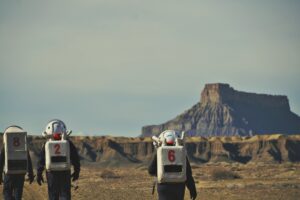
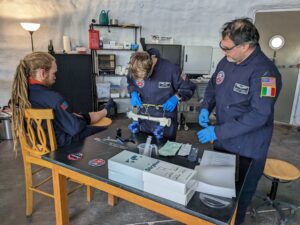
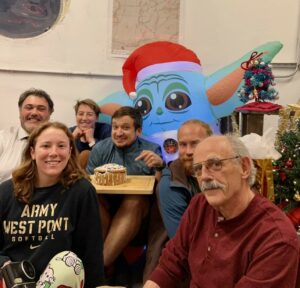
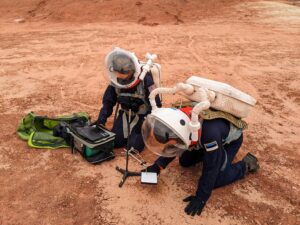
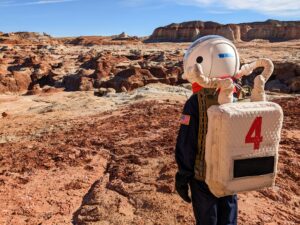
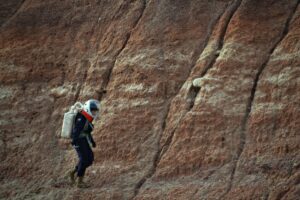
Crew 271 – Mars Society
Crew Commander: Marc Levesque (United States)
Executive Officer/Crew Astronomer: Cesare Guariniello (United States/Italy)
Crew Engineer/Health and Safety Officer: Sergii Iakymov (Ukraine)
Crew Geologist/Journalist: Helen Eifert (United States)
Crew Medical Researcher/Green Hab Officer: Alicyn Grete (United States)
Crew Researcher: Andres Käosaar (Estonia)
MDRS 271 was a Mars Society crew, self-named I.M.A.R.S. (International Mars Analog Research Simulation), was comprised of a diverse group of individuals representing four countries, providing an international flavor to the mission. Three members were veterans of past MDRS missions, while three were MDRS rookies. The crew’s priorities were to maintain all MDRS facilities, vehicles, and equipment in a safe and operable condition and to complete geological, astronomical, psychological, medical, and operational projects.
Prior to the mission, the crew met for 10 video sessions to organize and prepare themselves for their stay at MDRS. These meetings provided an orientation to the station, expectations for accommodations and living conditions, additional simulation protocols beyond those outlined in the MDRS Handbook, and expedition behavior characteristics derived from several sources. For a crew assembled from individual applications, the latter topic was vitally important to establish a cohesive and cooperative effort immediately upon arrival at MDRS. As was proven during the commander’s two previous missions, this set of expedition behaviors allowed this crew to work and live together and support each other extremely well throughout the duration of this mission. This also assisted in the completion of all planned projects and for achieving the safe and effective operation of the station that had been established as priorities for the mission. From this commander’s perspective, I could have not asked for a better crew.
A brief summary of crew project accomplishments follows, with a full description found in the Crew 271 End of Mission Science and Operations Report.
Titles: Coping Strategies for Long-Duration Space Exploration (Study 1); Team Challenge Resolution Mechanisms in Isolated and Confined Space Analog Mission Through Ethnographic Methods (Study 2)
Crew member: Andres Käosaar
The data gathering for the projects well very well – the members of Crew 271 patiently filled in my surveys, and there seemed to be no missing data points. While there weren’t too many overtly observable coping strategies or team challenge resolution mechanisms executed, there were some instances that were noted for further analysis. Due to the individual profiles of the Crew 271 members and the overall resemblance to a potential real long-duration space exploration team (i.e., culturally and professionally diverse crew very interested in human spaceflight), the data are good, and the sample has high validity. While unable to access all the data collected from surveys and journals, I’m quite hopeful and optimistic regarding the potential findings and conclusions from the studies.
Title: Drying trends of a clay-rich surface
Crew member: Helen Eifert
The goal for this particular experiment was to observe the drying trends of a clay-rich surface for a longer period of time following controlled wetting of the surface to understand chemically bound water trends better. This contributes to the overall understanding of how water may be retained, persevered, and detected on Mars. A location was selected north of the Hab for an experiment to measure drying trends of a clay-rich and Mars-like surface over the course of the MDRS mission. The initial wetting of the experiment was conducted on Sol 4, and the immediate drying trends were measured for an additional two hours following saturation of the surface on this first EVA using an ASD FieldSpec3. Return EVAs were conducted on Sol 5, Sol 6, and Sol 9 for an additional two measurements each day. On the last day of measurement, a dry sample was collected from a nearby site to get initial water content and an additional sample was collected from the experiment site, which still appeared damper than its surroundings. The two samples collected were returned to the Science Dome for loss on ignition analysis. The spectral data was post processed and will be plotted and analyzed to be used to supplement the findings of prior field campaigns. This work is in preparation for publication in the late spring 2023.
Title: Geology – Samples for In-Situ Resource Utilization
Crew member: Cesare Guariniello
Three long-distance EVAs collected samples in the area of Barrainca Butte (black vesicular igneous rocks, conglomerates, and light-colored mudstone), Candor Chasma (Summerville formation: red mudstone and sandstone with cross-cutting gypsum veins), and Skyline Rim (Dakota conglomeratic sandstone and Mancos Shale samples). Samples were weighted and processed in the oven in the Science Dome, then weighted again to ascertain water content. The samples will be shipped to Purdue University for further spectroscopic analysis to identify geotechnical properties for ISRU via remote sensing. In particular, spectra will be studied for indicators of water content and bulk size.
Title: Astronomy
Crew member: Cesare Guariniello
Robotic Observatory: After adjusting the MDRS-14 telescope, multiple observations were taken when the sky was clear. The most notable was M42 (Orion Nebula). Other objects that were sampled are M1 (Crab Nebula), M3, M31 (Andromeda Galaxy), M97, M101 (Pinwheel Nebula), Rosette Nebula, Barnard 33 (Horsehead Nebula). The Astronomy Support will work further on the telescope focus.
Musk Observatory: The sky was hazy or cloudy on most sols. One observation of the Sun was performed towards the end of the mission. This allowed the whole crew to participate in a solar observation. One photo of a group of sunspots with visible umbrae and penumbrae was captured and processed.
Title: Analog Mars Crew Evaluation of a Uniplanar External Fixation Training Module
Crew member: Alicyn Grete
The purpose of this project was to verify whether Martian analog crew members could use an offline, self-assessed module, and locally reproducible 3D printed bone simulation models to become confident and competent in performing external fixation procedures to manage open tibial fractures in an austere environment without access to specialist support from Mission Control. The first two days were spent having participants take a pre-learning confidence survey and complete the training materials and video. Over the next four days, each participant successfully completed a skills test, achieving a go ahead on each competence objective and verifying their work with self-assessment photos. Afterwards, each participant completed a post-learning survey and received Medical Makers certificate and memorabilia to commemorate their accomplishment. These results suggest that my hypothesis was correct: the Tibial Fracture Fixation Training Module can provide analog space crew members with the confidence and competence necessary to teach themselves a new surgical skill. I will be submitting an abstract to present this research at the West African College of Surgeons Conference in Togo this spring, and I am working on an article to submit to Aerospace Medicine and Human Performance journal.
Title: MDRS Engineering Projects
Crew member: Sergii Iakymov
During Crew 271 all 11 EVA suits were inspected for their power systems, and especially wiring connections, charging hardware, and rechargeable batteries. Issues were identified, changes were made to equipment, and recommendations made for better suit maintenance by future crews. A second project evaluated MDRS power consumption at the request of Mission Support by evaluating active station electrical devices. A spreadsheet of the station components and power consumption was created and sent to Mission Support.
Title: Radio communications system maintenance
Crew member: Marc Levesque
A maintenance check was conducted on the new MDRS radio repeater, and its antenna was raised to improve reception between the Hab and EVA teams, since communication gaps were discovered by crews this season. Communications checks during Crew 271 validated this problem, and a recommendation is made to relocate the repeater to the North Ridge. It is also recommended to re-establish Communications Officer duties on each MDRS crew, with those duties most likely assigned to the Crew Engineer to insure proper radio usage and battery recharging.
The I.M.A.R.S. crew would like to extend its appreciation to Dr. Robert Zubrin and Dr. Shannon Rupert for the opportunity to participate in a mission at MDRS and hope that we performed in a manner befitting the safe and effective operation of the station while contributing to the long term goal of human exploration and colonization of Mars.
Submitted by:
Marc Levesque
Crew 271 Commander
Supplemental Operations Report – December 31st
Supplemental Operations Report 31-DEC-2022
Name of person filing report: Shannon Rupert
Reason for Report: Routine/ Last day of 2022!
Non-nominal systems: Power system, toilet, cabinet door under sink in Hab
Action taken for non-nominal systems: See notes below for toilet and power system. The cabinet door might not be replaceable and if it isn’t we will go forage through the storage and see if there is an extra one in the cabinets for the ScienceDome
Generator: Running from about 8 pm to 8 am. The generator was repaired on Thursday. The problem was the governor, which had lost a small plastic pin and as a result was unstable and the vibration of the engine was causing the surging. How crazy! We also needed the oil pressure sensor changed as it was faulty and we had the bushings replaced because they would have needed it soon. The technician was great and spent a lot of time showing us what things were commonly needed and how to replace them. I am very grateful to not have to worry every night about losing power! The oil pressure sensor will be mailed to us, but it is easy to replace. He did not have one with him.
Solar— Nominal but we have had some cloudy days and since the generator currently won’t charge the batteries, we have had to use the generator more hours than normal.
Solar— SOC Last 24 hours:
Max 100
Min 44
Avg 65.9
Power system notes: I reprogramed the router so SOC can again be monitored remotely. Yay, me!
Propane Reading, station tank – 73 % (all propane tanks were filled on Tuesday, the 27th, in anticipation of the storm
Propane Reading, director tank— 83 %
Propane Reading, intern tank— 81 %
Propane Reading, generator— 73 %
Ethanol Free Gasoline – 0 gallons
Water (static tank) – 550 gallons
Water in GreenHab – not noted gallons
Water in ScienceDome: 0 gallons
Water (Outpost tank) – 400 gallons
Hab toilet tank emptied: See crew operations reports. On the 31st, I did flush the tank three times: 1. Filled it up and emptied what was left from the crew. It smelled. 2. Added a bottle of dish soap and 5 gallons of hot water and emptied. 3. Filled it with fresh water and emptied, then added water and digester so it is usable. Each time I emptied it I still heard the glub, glub, meaning something is still wrong (how do you think my very professional words?)
Sojourner rover used: yes
Hours: not noted
Beginning charge: 100
Ending charge: 100
Currently charging: yes
Notes on rovers: nothing to report
ATV’s Used: (Honda, 350.1, 350.2, 300): none
Reason for use: n/a
Oil Added? no
ATV Fuel Used: 0 Gals
# Hours the ATVs were Used today: 0
Notes on ATVs: Nothing to report
HabCar used and why, where? Yes, to town
CrewCar used and why, where? Yes, to town and to Grand Junction
Luna used and why, where? No
General notes and comments: Nothing to note
Summary of internet: Nominal. HughesNet is being moved from my trailer and will be reinstalled in the Hab for crew use during simulation.
Summary of suits and radios: See crew operations reports.
EVA COMMS: Further changes to the COMMS system did not improve signal. They were: all radios with larger antenna, a rover mounted unit, and extending the repeater antenna by an additional eight feet. The decision was made to reinstall the system on the North Ridge, which was where it was when we tested it last season. Crew 271 did find a route to the top of the ridge, but it is going to take a huge effort to move it. We will do this as soon as we can, but it may be awhile before everything comes together.
Campus wide inspection, if action taken, what and why? RAM exterior needs some repainting.
Summary of general operations: It was so strange to have two external people on site in one week to work on systems. The crew mentioned this and I hadn’t thought about it, but I think I’m so lucky to have found people who can help when we really need it. We had the generator technician and then the electrician and the off-grid guy.
Summary of Hab operations: One of the bean bag chairs broke and the crew threw it away although I had planned to send it back. One of the two doors on the kitchen cabinet under the sink broke and is scheduled to be repaired tomorrow. We noted several things needing attention during the two week period at the end of January when we have no crew. The electrician was also briefed on where and what we wanted done with outlets, etc. He will determine where electrical rewiring needs to be done. The off-grid guy studied the power system and we shall see if he can solve the mystery of why the generator and the inverters won’t get along.
Summary of Outpost operations: General cleanup in preparation for upgrading deck.
Summary of GreenHab operations: Supplemental light 10-2 pm.
Summary of ScienceDome operations: Standing desk was returned from the Hab.
ScienceDome Dual Split: on at 65 degrees overnight (when I remember).
Summary of RAM operations: We have a lot of used oil to recycle.
Summary of any observatory issues: Both observatories were used by Crew 271 and some issues were reported to Peter.
Summary of health and safety issues: Nothing to report
Questions, concerns, supplies needed and requests: Happy New Year and welcome to Donald Jacques, our new Site Manager, who arrived at MDRS this evening in his big black bus!
Supplemental Operations Report 31-DEC 2022
Supplemental Operations Report 31-DEC-2022
Name of person filing report: Shannon Rupert
Reason for Report: Routine/ Last day of 2022!
Non-nominal systems: Power system, toilet, cabinet door under sink in Hab
Action taken for non-nominal systems: See notes below for toilet and power system. The cabinet door might not be replaceable and if it isn’t we will go forage through the storage and see if there is an extra one in the cabinets for the ScienceDome
Generator: Running from about 8 pm to 8 am. The generator was repaired on Thursday. The problem was the governor, which had lost a small plastic pin and as a result was unstable and the vibration of the engine was causing the surging. How crazy! We also needed the oil pressure sensor changed as it was faulty and we had the bushings replaced because they would have needed it soon. The technician was great and spent a lot of time showing us what things were that would commonly need replaced and how to replace them. I am very grateful to not have to worry every night about losing power! The oil pressure sensor will be mailed to us, but it is easy to replace. He did not have one with him.
Solar— Nominal but we have had some cloudy days and since the generator currently won’t charge the batteries, we have had to use the generator more hours than normal.
Solar— SOC Last 24 hours:
Max 100
Min 44
Avg 65.9
Power system notes: I reprogramed the router so SOC can again be monitored remotely. Yay, me!
Propane Reading, station tank – 73 % (all propane tanks were filled on Tuesday, the 27th, in anticipation of the storm
Propane Reading, director tank— 83 %
Propane Reading, intern tank— 81 %
Propane Reading, generator— 73 %
Ethanol Free Gasoline – 0 gallons
Water (static tank) – 550 gallons
Water in GreenHab – not noted gallons
Water in ScienceDome: 0 gallons
Water (Outpost tank) – 400 gallons
Hab toilet tank emptied: See crew operations reports. On the 31st, I did flush the tank three times: 1. Filled it up and emptied what was left from the crew. It smelled. 2. Added a bottle of dishsoap and 5 gallons of hot water and emptied. 3. Filled it with fresh water and emptied, then added water and digester so it is usable. Each time I emptied it I still heard the glub, glub, meaning something is still wrong (how do you think my very professional words?)
Sojourner rover used: yes
Hours: not noted
Beginning charge: 100
Ending charge: 100
Currently charging: yes
Notes on rovers: nothing to report
ATV’s Used: (Honda, 350.1, 350.2, 300): none
Reason for use: n/a
Oil Added? no
ATV Fuel Used: 0 Gals
# Hours the ATVs were Used today: 0
Notes on ATVs: Nothing to report
HabCar used and why, where? Yes, to town
CrewCar used and why, where? Yes, to town and to Grand Junction
Luna used and why, where? No
General notes and comments: Nothing to note
Summary of internet: Nominal. HughesNet is being moved from my trailer and will be reinstalled in the Hab for crew use during simulation.
Summary of suits and radios: See crew operations reports.
EVA COMMS: Further changes to the COMMS system did not improve signal. They were: all radios with larger antenna, a rover mounted unit, and extending the repeater antenna by an additional eight feet. The decision was made to reinstall the system on the North Ridge, which was where it was when we tested it last season. Crew 271 did find a route to the top of the ridge, but it is going to take a huge effort to move it. We will do this as soon as we can, but it may be awhile before everything comes together.
Campus wide inspection, if action taken, what and why? RAM exterior needs some repainting.
Summary of general operations: It was so strange to have two external people on site in one week to work on systems. The crew mentioned this and I hadn’t thought about it, but I think I’m so lucky to have found people who can help when we really need it. We had the generator technician and then the electrician and the off-grid guy.
Summary of Hab operations: One of the bean bag chairs broke and the crew threw it away although I had planned to send it back. One of the two doors on the kitchen cabinet under the sink boke and is scheduled to be repaired tomorrow. We noted several things needing attention during the two week period at the end of January when we have no crew. The electrician was also briefed on where and what we wanted done with outlets, etc. He will determine where electrical rewiring needs to be done. The off-grid guy studied the power system and we shall see if he can solve the mystery of why the generator and the inverters won’t get along.
Summary of Outpost operations: General cleanup in preparation for upgrading deck.
Summary of GreenHab operations: Supplemental light 10-2 pm.
Summary of ScienceDome operations: Standing desk was returned from the Hab.
ScienceDome Dual Split: on at 65 degrees overnight (when I remember).
Summary of RAM operations: We have a lot of used oil to recycle.
Summary of any observatory issues: Both observatories were used by Crew 271 and some issues were reported to Peter.
Summary of health and safety issues: Nothing to report
Questions, concerns, supplies needed and requests: Happy New Year and welcome to Donald Jacques, our new Site Manager, who arrived at MDRS this evening in his big black bus!


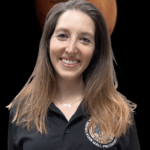
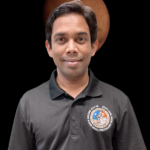
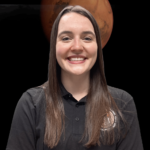
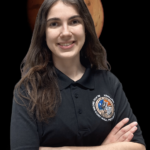
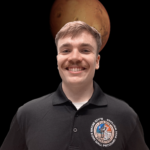
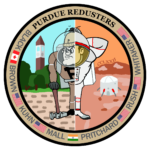
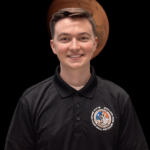
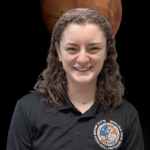
You must be logged in to post a comment.